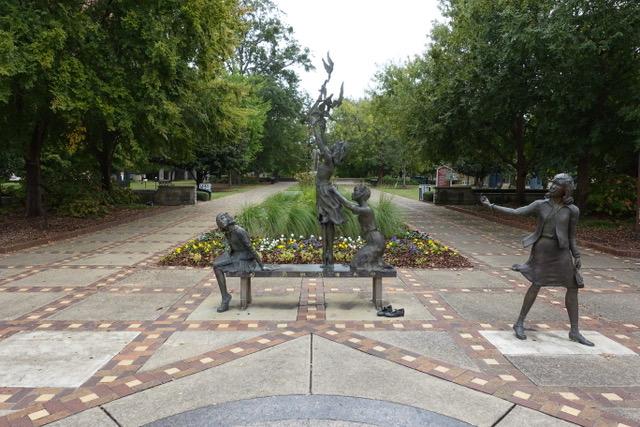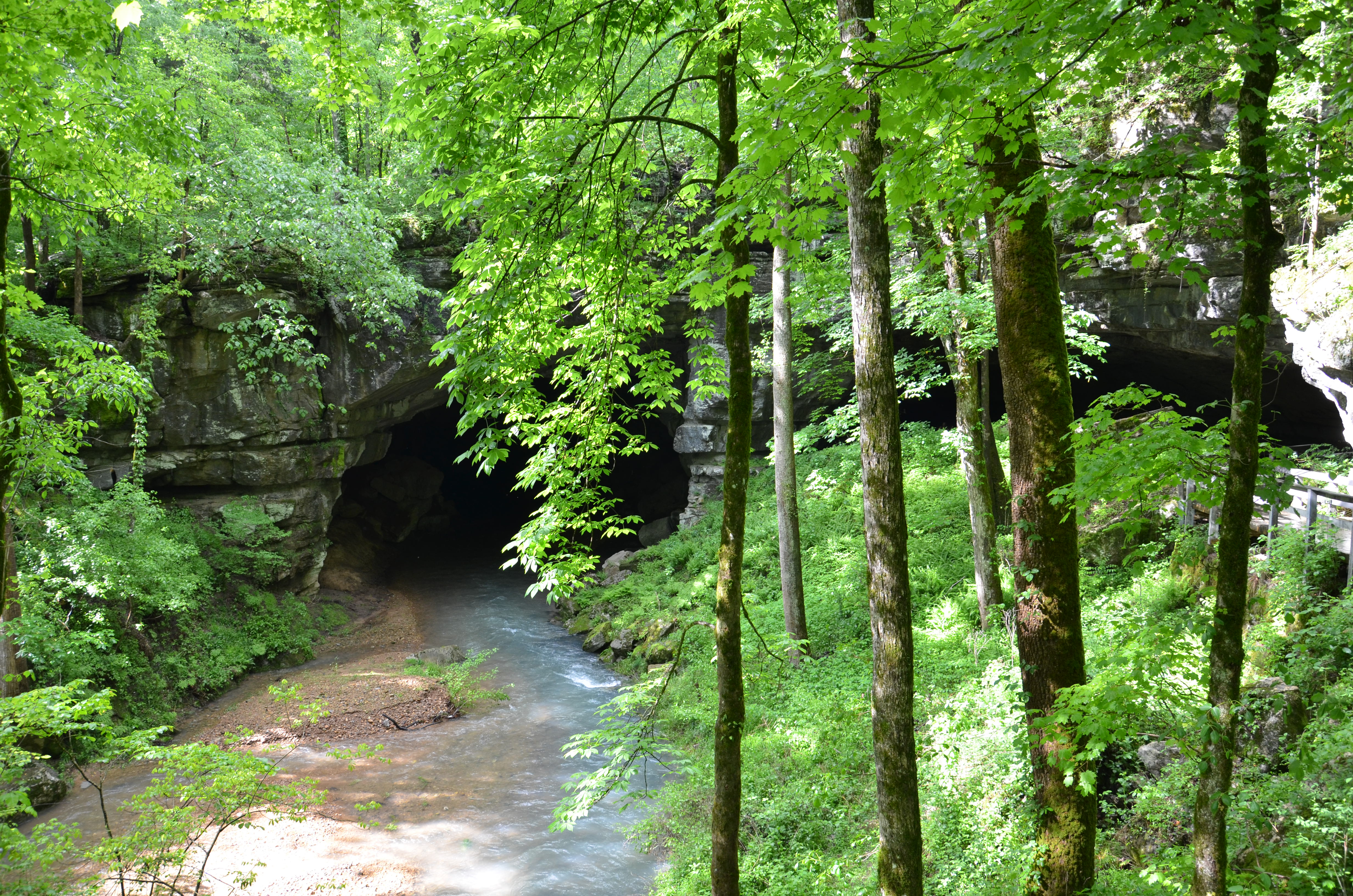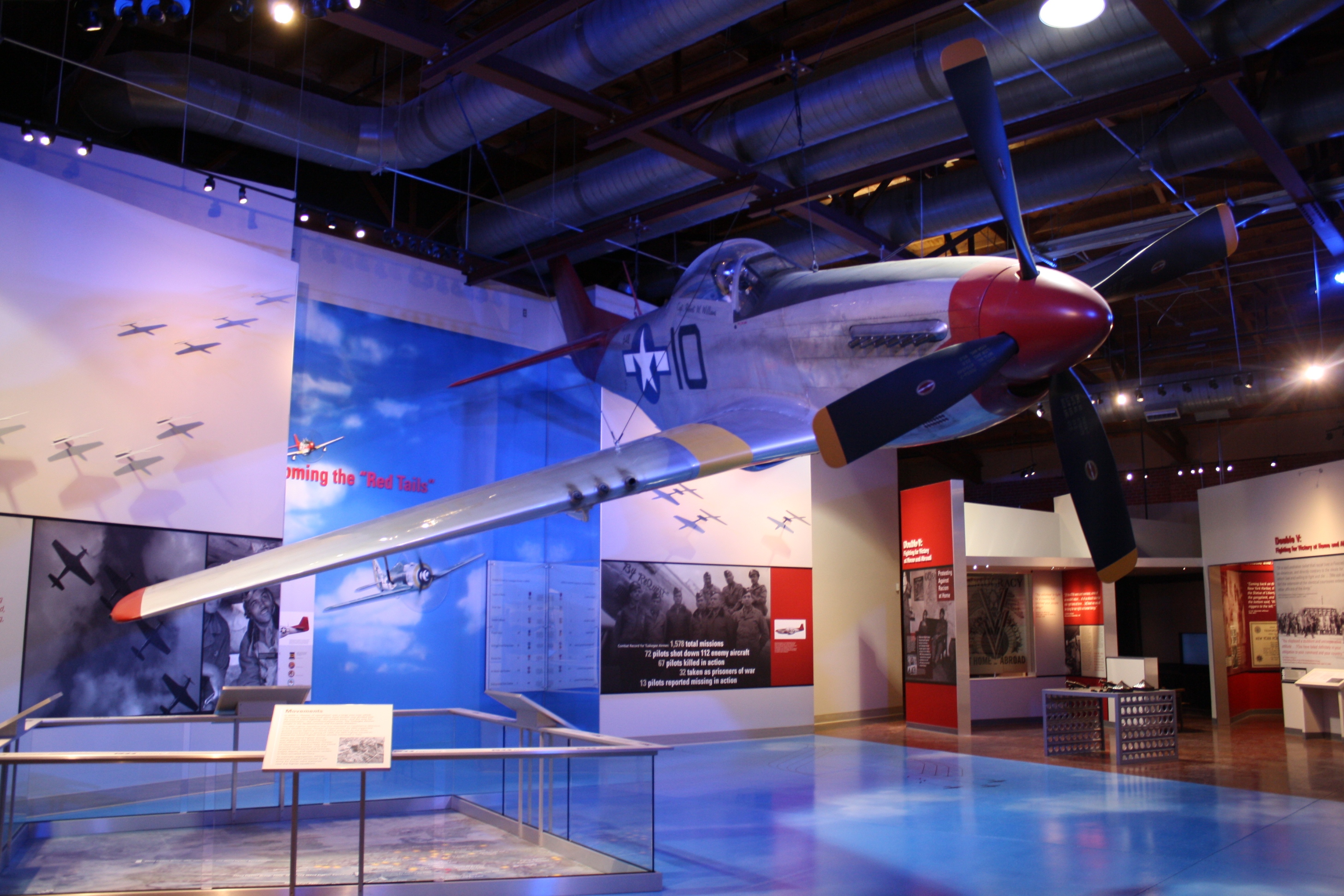
Hundreds of people visit Kelly Ingram Park each year to learn about the Civil Rights Movement in Birmingham
Birmingham Civil Rights
In 1963, images of snarling police dogs unleashed against non-violent protesters and of children being sprayed with high-pressure hoses appeared in print and television news around the world. These dramatic scenes of violent police aggression against

Greyhound mural at the Anniston Greyhound Bus Depot.
Freedom Riders
In 1961, a small interracial band of “Freedom Riders” challenged discriminatory laws requiring separation of the races in interstate travel. They were attacked by white segregationists, who firebombed the bus. Images of the attack appeared in hundred

The Horseshoe Bend NMP's Mission 66 Visitor Center with 1812 era 3-pounder cannon.
Horseshoe Bend
On 27 March 1814, Major General Andrew Jackson ‘s army of 3,300 men attacked Chief Menawa’s 1,000 Red Stick Creek warriors fortified in a horseshoe shaped bend of the Tallapoosa River. Over 800 Red Sticks died that day. The battle ended the Creek War

Little River Canyon in the Fall
Little River Canyon
Little River is unique because it flows for most of its length atop Lookout Mountain in northeast Alabama. Forested uplands, waterfalls, canyon rims and bluffs, pools, boulders, and sandstone cliffs offer settings for a variety of recreational activi

The Potkopinu section, between milepost 17 and 20, follows the historic Old Trace. The "sunken" nature of the trail is due to the footsteps of thousands of travelers between the 1780s and 1820s in the soft loess soil.
Natchez Trace
The Natchez Trace National Scenic Trail is five sections of hiking trail running roughly parallel to the 444-mile long Natchez Trace Parkway scenic motor road. The foot trails total more than 60 miles and offer opportunities to explore wetlands, swam

The Natchez Trace Parkway commemorates a historic travel route that helped build the young United States. The Parkway 444 miles, with plenty of stops to allow you to explore some of the history or enjoy the scenery along the way.
Natchez Trace
The Natchez Trace Parkway is a 444-mile recreational road and scenic drive through three states. It roughly follows the "Old Natchez Trace," a historic travel corridor used by American Indians, "Kaintucks," European settlers, slave traders, soldiers,

Prehistoric people continuously used Russell Cave for over 10,000 years
Russell Cave
Russell Cave is an archeological site with one of the most complete records of prehistoric cultures in the Southeast. In the 1950s, archeologists uncovered a large quantity of artifacts representing over 10,000 years of use in a single place. Today,

During the 50th Anniversary Walking Classroom event participants marched nearly 54-miles from Selma to Montgomery.
Selma To Montgomery
Established by Congress in 1996, the Selma to Montgomery National Historic Trail commemorates the people, events, and route of the 1965 Voting Rights March in Alabama. Led by Dr. Martin Luther King, Jr., Black and White non-violent supporters fought

The museum tells the story of Major Ridge, the influential Ridge family including prominent son John Ridge, Cherokee history, and the Trail of Tears, as well as subsequent history of the home and region.
Trail Of Tears
Remember and commemorate the survival of the Cherokee people, forcefully removed from their homelands in Georgia, Alabama, and Tennessee to live in Indian Territory, now Oklahoma. They traveled by foot, horse, wagon, or steamboat in 1838-1839.

One of the most beloved and recognized airplanes of World War II - North American P-51D Mustang
Tuskegee Airmen
Before the first African American military pilots became known as the "Red Tails" they wore striped tails as they began their flight training in the Army's PT-17 Stearman bi-plane. Their flying adventure started at Moton Field, in Tuskegee, Alabama,

This house, like Washington himself, was a lesson plan to both students and benefactors of Tuskegee Institute.
Tuskegee Institute
In 1881, Booker T. Washington arrived in Alabama and started building Tuskegee Institute both in reputation and literally brick by brick. He recruited the best and the brightest to come and teach here including George Washington Carver who arrived in